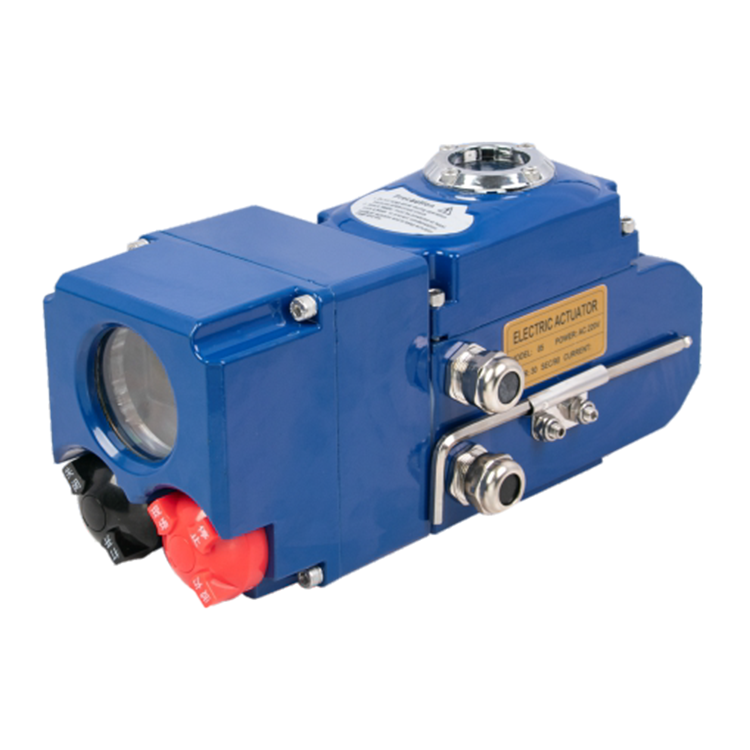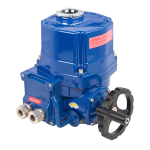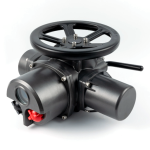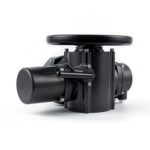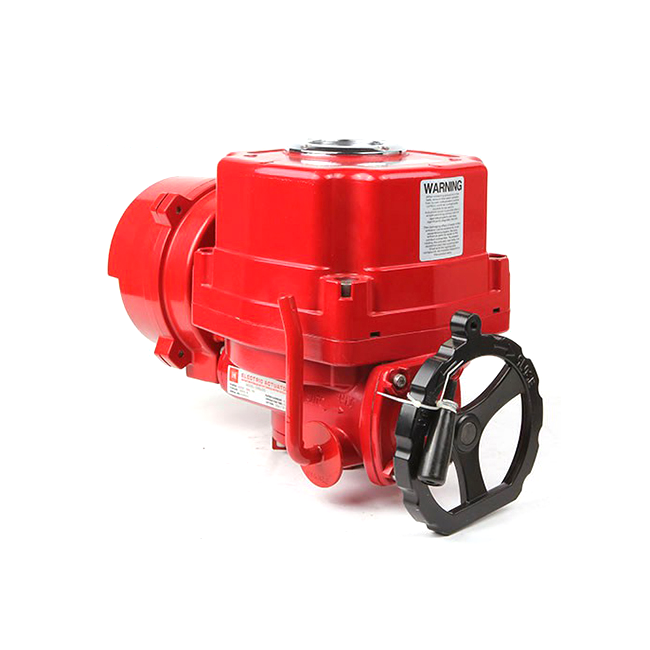What is an Electric Actuator?
An electric actuator is a tool that transforms electric energy right into mechanical activity. This conversion process is crucial for automating a large range of commercial and business applications. By exactly managing the position, rate, and force of mechanical systems, electric actuators play an important role in enhancing efficiency and reliability.
The key function of an electric actuator is to give controlled movement or positioning. They are normally made use of in applications where exact and repeatable motion is necessary. Electric actuators are favored over pneumatic and hydraulic actuators in numerous setups as a result of their greater efficiency, cleaner procedure, and the ease of integrating with modern-day control systems.
Below are some vital qualities and advantages of electrical actuators:.
| Characteristic | Information |
|---|---|
| Energy Source | Electrical power |
| Control | Exact and programmable |
| Performance | High, with minimal energy loss |
| Upkeep | Reduced, contrasted to hydraulic and pneumatically-driven systems |
| Environment | Clean, no liquid leakages |
| Integration | Easy with digital systems |
Main Components of an Electric Actuator
Electric actuators consist of several key components:
-
Motor: The motor is the primary component that converts electrical energy into mechanical motion. It can be a DC motor, AC motor, or stepper motor, depending on the application.
-
Gearbox: The gearbox reduces the high-speed, low-torque output of the motor to a lower-speed, higher-torque output, suitable for driving the actuator’s load.
-
Position Sensor: This sensor monitors the position of the actuator and provides feedback to ensure precise control and positioning.
-
Control Unit: The control unit processes input signals and commands the motor to move the actuator to the desired position.
-
Housing: The housing encloses and protects the internal components from environmental factors such as dust, moisture, and mechanical damage.
-
Limit Switches: These switches prevent the actuator from moving beyond its intended range of motion, ensuring safety and preventing damage.
Types of Electric Actuator
There are several types of electric actuators, each designed for specific applications:
-
Multi-Turn Electric Actuator: These actuators are designed to perform multiple rotations to achieve the desired motion. They are commonly used in valve control applications where precise positioning is required.
-
Quarter-Turn Electric Actuator: These actuators rotate 90 degrees (a quarter turn) to open or close valves. They are often used in ball valves, butterfly valves, and plug valves.
-
Explosion-Proof Electric Actuator: Designed for use in hazardous environments, providing safety against explosions.
How does an Electric Actuator work?
An electric actuator operates by converting electrical energy into mechanical motion through the following steps:
-
Electrical Signal Input: The actuator receives an electrical signal from a control system, indicating the desired position or motion.
-
Motor Activation: The control unit activates the motor, which generates rotational motion.
-
Gear Reduction: The rotational motion is transmitted through a gearbox, which reduces the speed and increases the torque.
-
Motion Conversion: Depending on the actuator type, the rotational motion is either directly applied (for rotary actuators) or converted into linear motion (for linear actuators).
-
Position Feedback: A position sensor continuously monitors the actuator’s position and provides feedback to the control unit to ensure accurate positioning.
-
Completion of Motion: The actuator moves to the desired position, and limit switches or position sensors ensure it stops precisely where required.
What is the function of an Electric Actuator?
An electric actuator is a critical component in various automation systems, developed to convert electric energy into mechanical activity. This motion is generally direct or rotary, depending on the specific application. The key feature of an electric actuator is to give specific control over the movement and positioning of various systems or gadgets. Below are the core functions of an electric actuator:
| Feature | Summary |
|---|---|
| Automation | Electric actuators automate the activity of parts in machinery and equipment, boosting functional performance. |
| Control | They use exact control over the positioning and activity of valves, dampers, and various other mechanical devices. |
| Regulation | Electric actuators are used to regulate flow, stress, and degrees in numerous commercial processes, making sure regular efficiency. |
| Safety and security | In emergency situation situations, electric actuators can promptly adjust or close down systems to avoid mishaps or damages. |
| Comments | Lots of electrical actuators offer comments signals for monitoring and controlling system efficiency in real-time. |
These features make electric actuators important in sectors such as production, energy, automotive, and aerospace. By enabling automation and precise control, they dramatically add to improved performance, safety and security, and effectiveness in numerous applications.
Where are Electric Actuators Used?
Electric actuators are used in a wide range of industries and applications, including:
-
Industrial Automation: Used to control machinery and production processes in manufacturing plants.
-
HVAC Systems: Control dampers and valves to regulate airflow and temperature.
-
Water and Wastewater Treatment: Automate the control of valves in treatment plants.
-
Oil and Gas: Operate valves in pipelines and refineries.
-
Power Generation: Control turbines, boilers, and other equipment in power plants.
-
Automotive: Used in vehicle systems such as throttle control, seat adjustment, and mirror positioning.
How to Choose an Electric Actuator for Valve?
Selecting the right electric actuator for a valve involves considering several factors:
-
Type of Valve: Identify whether the valve is a multi-turn, quarter-turn, or explosion proof valve to select the appropriate actuator type.
-
Torque Requirements: Determine the torque needed to operate the valve. The actuator must provide sufficient torque to open and close the valve under all conditions.
-
Power Supply: Ensure the actuator is compatible with the available power supply (e.g., 220V electric actuator).
-
Environmental Conditions: Consider the operating environment, including temperature, humidity, and potential exposure to corrosive substances. For harsh environments, a stainless steel explosion-proof electric actuator may be required.
-
Control System Compatibility: Ensure the actuator can interface with the existing control system and provides the necessary feedback and control signals.
-
Manufacturer and Supplier: Choose reliable electric actuator manufacturers and suppliers with a proven track record. For example, electric actuator manufacturers in China offer a wide range of options and customization capabilities.
FAQs
Q1: What is a multi-turn electric actuator?
A: A multi-turn electric actuator is designed to perform multiple rotations to control devices like gate valves and globe valves, providing precise positioning.
Q2: What are the benefits of using a stainless steel explosion-proof electric actuator?
A: Stainless steel explosion-proof electric actuators are highly durable and resistant to corrosion, making them ideal for hazardous environments where safety is paramount.
Q3: What is the difference between a multi-turn electric actuator and a quarter-turn electric actuator?
A: A multi-turn electric actuator performs multiple rotations for precise control, while a quarter-turn electric actuator rotates 90 degrees to open or close a valve.
Q4: Who are the leading electric actuator manufacturers in China?
A: Several reputable manufacturers in China specialize in electric actuators, offering high-quality products and customization options. Examples include include LORZEN Valve.
Q5: How do I select an electric actuator supplier in China?
A: When choosing an electric actuator supplier in China, consider factors such as product quality, reliability, customization capabilities, and after-sales support.
Q6: Can I use a 220V electric actuator for my application?
A: Yes, a 220V electric actuator can be used if it matches the power supply specifications of your application. Ensure it meets the torque and control requirements.
Q7: What industries benefit most from using electric actuators?
A: Industries such as industrial automation, HVAC, water treatment, oil and gas, power generation, and automotive benefit significantly from the precise control and automation provided by electric actuators.
Q8: What should I consider when choosing an electric actuator manufacturer in China?
A: Consider the manufacturer’s reputation, product quality, range of offerings, customization options, and customer support when selecting an electric actuator manufacturer in China.
Conclusion
Electric actuators play a crucial role in modern automation by converting electrical energy into precise mechanical motion. Understanding the different types of electric actuators, their components, and how they work helps in selecting the right actuator for specific applications. When choosing an electric actuator, consider factors such as the type of valve, torque requirements, power supply, environmental conditions, and control system compatibility. Additionally, partnering with reputable electric actuator manufacturers and suppliers from China can ensure access to high-quality products and reliable support.
By leveraging the capabilities of multi-turn electric actuators, stainless steel explosion-proof electric actuators, and quarter-turn electric actuators, industries can achieve greater efficiency, safety, and control in their operations. Whether for industrial automation, HVAC systems, or other applications, electric actuators are essential components that enhance the performance and reliability of mechanical systems.

